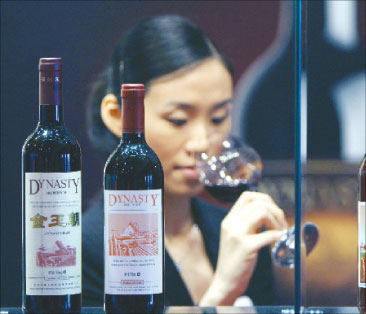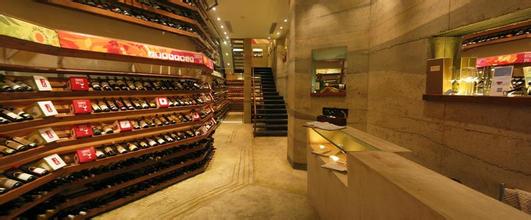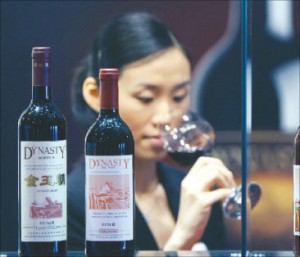The Chinese red wine market, both promising and difficult for foreign companies
Cultural values influencing Chinese red wine consumption
With 1.86 red wine bottles sold in 2013, China has overtaken France as the world’s biggest red wine consumer.
The colour plays a crucial role in the success of red wine in China as red is the colour of luck, wealth, power and success in China. This is really important for Chinese people who pay great attention to the meaning consumption goods. Unlike red, white is associated with death; of course, it makes white wine far less popular in China. Cultural values connected with the colour of wine could even be more influential than the taste of wine when Chinese consumers purchase it. To understand values and symbolic is crucial for new entrant on Chinese red wine market.
Opportunities for foreign brands with lower-priced on Chinese red wine market
Foreign companies saw their sales of luxury wine slow down as a result of a crackdown on Lavish-gift-Giving when the Chinese government launched the anti-corruption campaign in 2012. Wine companies such as the American ASC Fine Wines thought that this slow-down would be a short-term phenomenon but this trend turns out to last.
However, if 5000 Yuan bottles are less consumed, 1000-1500 Yuan bottles are still successful. The middle-price Chinese red wine market is growing. With more and more Chinese Internet users, e-commerce can provide wine companies with opportunities. Selling wine on both famous Chinese e-commerce platform T-Mall and on its own platform, ASC Fine Wines intends to establish itself on the wine e-commerce market. Interviewed by the Wall Street Journal, John Watkins, chief executive of ASC Fine Wines explained that the e-commerce allows targeting specific consumers such as women and young people.
With Chinese people consuming more wine, a Chinese wine industry is developing and domestic supply is increasing. However, foreign brands such as ASC are confident that this Chinese production will eventually be beneficial for them. Indeed, ASC expects Chinese people to drink this local wine as a first contact with wine. Then, they will be curious and willing to discover other wines, they will purchase foreign brands.
Foreign brands facing wine counterfeiting
Wine Counterfeiting turns out to be a major problem on the Chinese red wine market. According to consulting firms, 50% of the bottles sold in China are fake. Wine counterfeit experts said that this percentage could be as high as 70%.
More than 90% of the French Chateau Lafite bottles sold in China are counterfeited. Two million of Chateau Lafite bottles are supposedly annually sold in China whereas the brand annually supplies Asia with only 80 000 (one third of its production). Fake bottles are sold between 90 and 35000 Yuan. A 2013 market survey from the Wine Intelligence revealed that 44% of Chinese consumers are worried about wine counterfeiting. This is the first reason which discourages them from buying wine. Counterfeiters use the original label with very slight differences. As most Chinese people cannot read French or English, it is particularly difficult for them to detect the difference. Other counterfeiters directly re-fill empty bottles with false wine. Such counterfeited wines are namely served in restaurants.
To fight this trend on Chinese red wine market, foreign companies smash bottles after tastings in China. Some companies are using technology as a means against counterfeiting. A QR code is on the neck of bottle sold by ASC Fine Wines. Scanning the QR code allows consumers to get information about the wine in their bottle. A hologram which can be scanned is also present on the bottle so that it is possible to double check. Each bottle owns its unique QR code. The codes are not be printed in China but imported and are kept in a locked place until they are affixed on the bottles when they arrive in China. The Australian brand McHenry Hohnen has even developed an app to set up a tracability system. With the app installed on their smartphones, consumers can scan a label affixed on the bottle and get information about the background of the wine. McHenry Hohnen uses this system to track every single carton and every single bottle sent to Chinese red wine market. Governments are also aware that wine counterfeiting is a serious problem. Thus, in April 2014, China and France signed a joint “declaration of intent” to fight the phenomenon.
More consulting China








